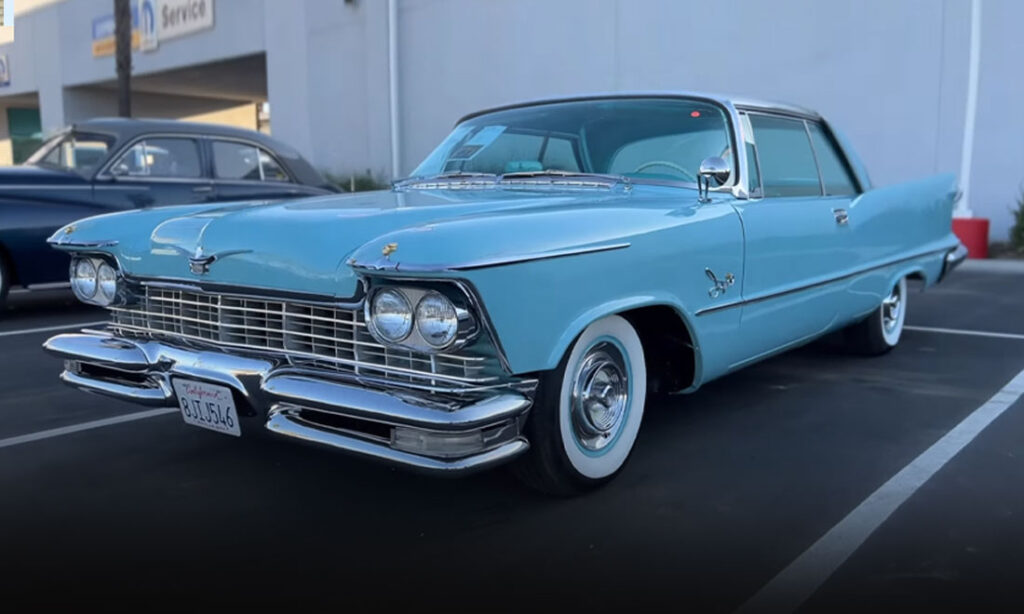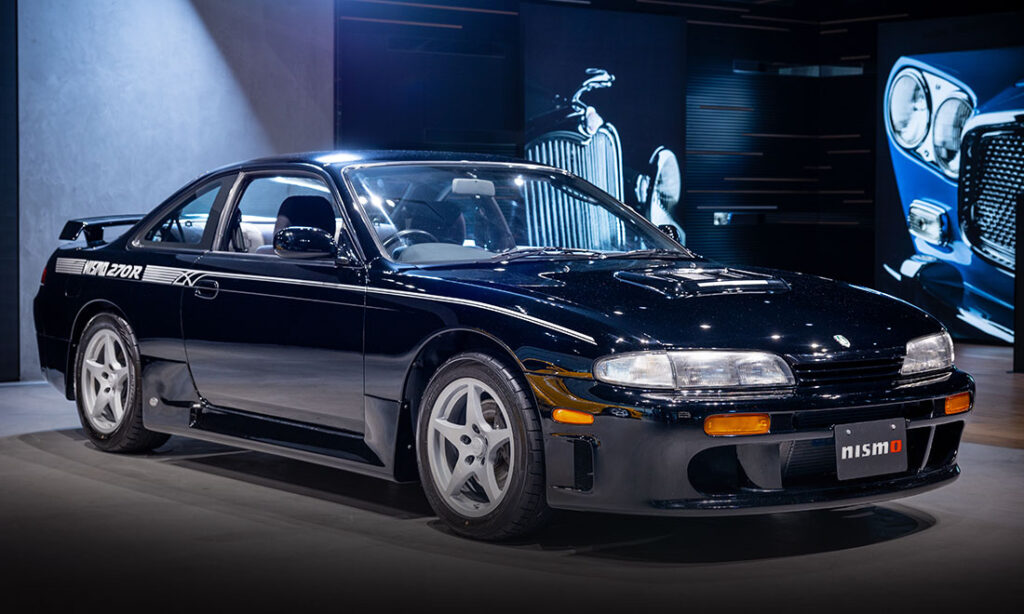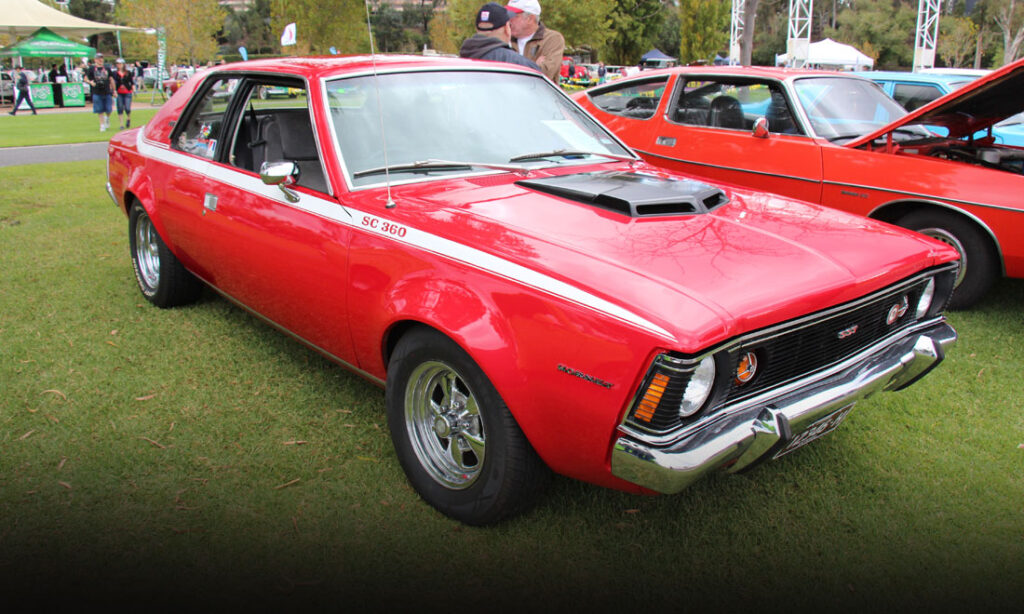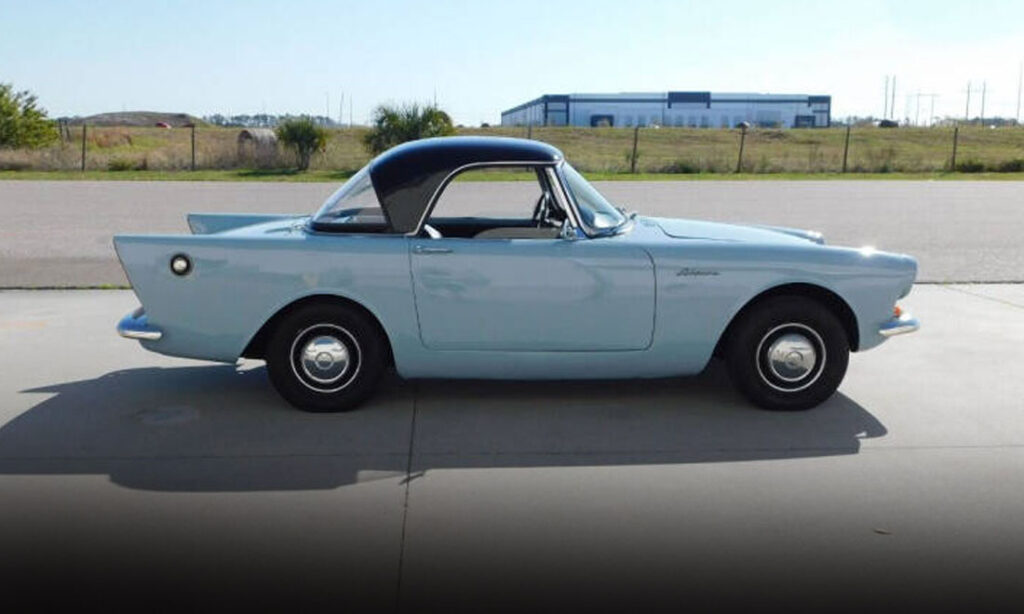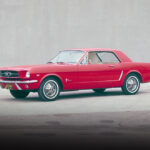Peak Pontiac Bonneville
The Pontiac Bonneville’s early days represent some of the best cars the brand ever produced, deftly melding luxury, performance, and style.
Breadth of the Bonneville
Branding is central to any successful sales pitch. Connotations, subtexts, and cultural associations position and fix a brand’s identity for consumers. The brand identity of Pontiac, the long-time mid-tier GM brand, shifted over the decades, changing as needs be to best appeal to its target market. For a time, Pontiac flirted with high-end luxury, emulating GM’s top-level Cadillacs. Pontiac dove into performance in the 1960s and under the direction John DeLorean helped spark the muscle car craze with the GTO. For many years thereafter, Pontiac reverted to its mid-market roots, serving up a slew of decent if forgettable mass-market autos alongside torch-carrying models like the Firebird and a late-returning GTO. Through nearly half a century, there was the Bonneville, Pontiac’s long-time top-of-the-line model.
Pontiac’s Glory Days
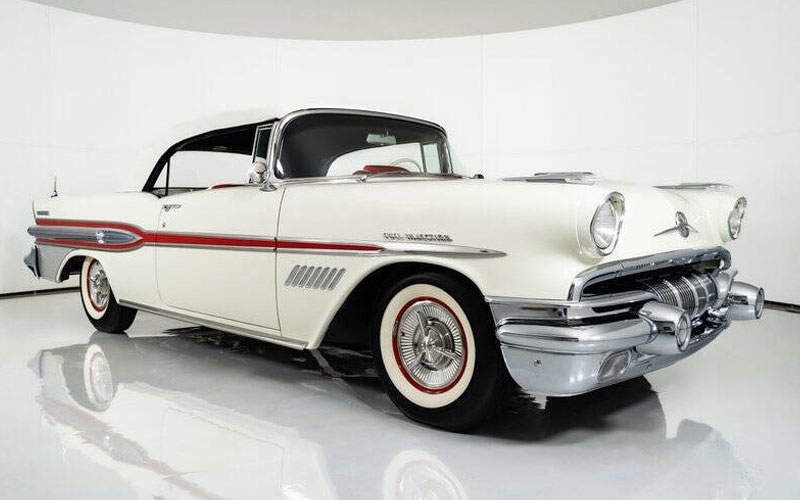
The Bonneville’s longevity allows us to trace evolving public tastes and Pontiac’s shifting business imperatives. Like much of Pontiac’s lineup, the Bonneville’s later generations tended toward serviceable if bland sedans of little distinction. It was arguably this lack of brand distinction as represented by an early 2000’s grab bag lineup of Aztek/GTO/Bonneville that ultimately doomed the company when GM was forced to shutter whole divisions in the wake of the 2008 financial crisis.
The end to the Bonneville is ironic in hindsight as the car began as a flashy offshoot of the Pontiac Star Chief, gussied up and decked out, it was equipped and priced in direct competition with its GM siblings over at Cadillac. The Bonneville name was first applied to Corvette lookalike Pontiac show car in 1954. The name is derived from the Bonneville Salt Flats in Utah, a popular staging ground for setting speed records (itself named after US Army General and explorer Benjamin Bonneville).
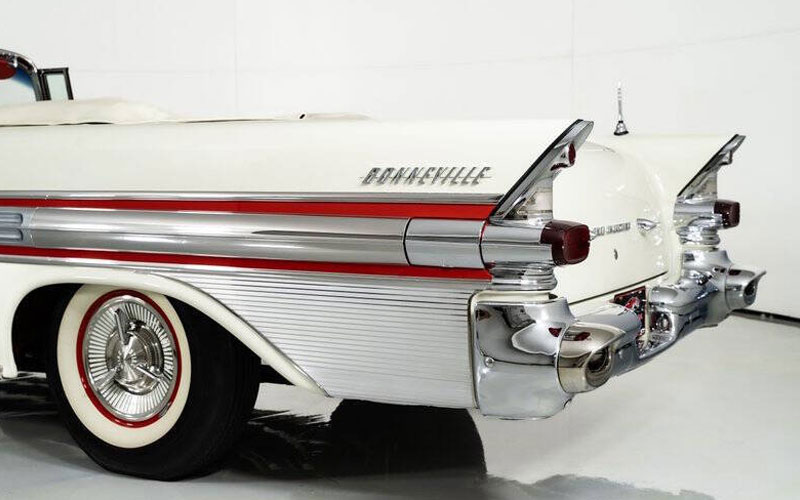
The first production car to carry the Bonneville name was a two-door convertible variant of the Pontiac Star Chief. The Bonneville was offered with a fuel-injected V8 engine, power windows, doors, and brakes along with a bevy of high-end features and creature comforts (optional AC!) that put it on par with offerings from luxury marques like Cadillac. Indeed, the Bonneville’s price reflected this jump upmarket as it was stickered at nearly $5,800, more than twice the entry-level Star Chief. With proper late-1950s styling courtesy of Harley Earl’s “Art and Colour Section,” the new Bonneville looked every bit the best Pontiac had to offer. The price tag, however, kept sales to a very modest 630 units making it an exceedingly rare collector’s car today.
1958 Pontiac Bonneville

For 1958, Pontiac debuted the Bonneville as a stand-alone model adding a new two-door hardtop to pair with the convertible for body style options. Price was dropped to a much more modest $3,481, which still made the Bonneville Pontiac’s top-of-the-line model. The 370 cu.-in. V8 powering the Bonneville offered a range of outputs based on the carburetor setup with 255 or 280 horsepower while the “Tri-Power” triple two-barrel-carbureted and the fuel-injected versions hit 300 and 310 horsepower, respectively. The late 1950s era of chrome and fins was hitting its high watermark and the Bonneville’s look leaned into the trendy styling in lockstep with the rest of GM’s lineup.
1959-60 Pontiac Bonneville
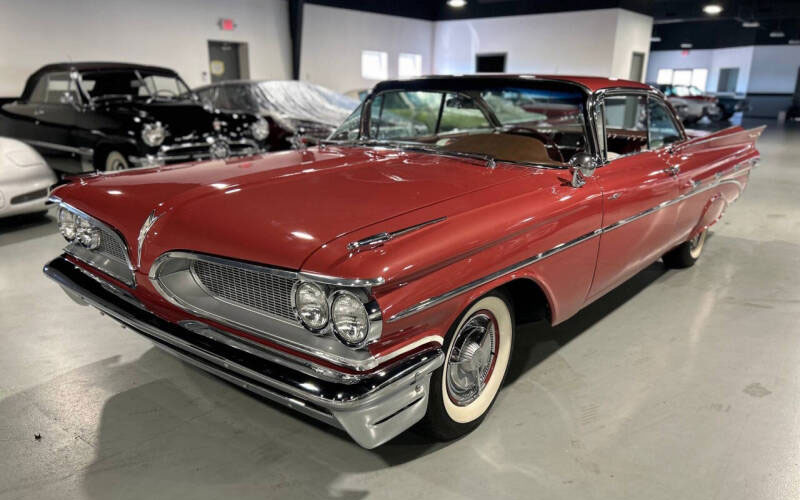
As Pontiac’s flagship model, the Bonneville’s mission of broad appeal led to the addition of two new body styles, a four-door sedan and a “Safari” four-door station wagon. These years represented a major shift in automotive styling as gaudy chrome and fins gave way to cleaner, straighter designs that reflected the aesthetics of Mid-Century Modernism.
Following the retirement of Harley Earl and the ascendence of Bill Mitchell as GM’s lead in design, the Bonneville’s look, and that of Pontiacs as a whole, pivoted sharply. Most noticeable was the brand’s new “Wide Track” look. Designers and engineers widened the Pontiac lineup, 2.7 inches greater than the GM average, to give their cars a substantial, road-dominating presence. The now iconic Pontiac split grille design was also introduced for the 1959 model year (skipped for the 1960 model before returning for the third generation Bonneville).
The Bonneville’s 389 cu.-in. V8 offered between 260 and 345 horsepower, again depending on the carburetor setup, while fuel-injection, once a Bonneville hallmark, was dropped.
1961-64 Pontiac Bonneville
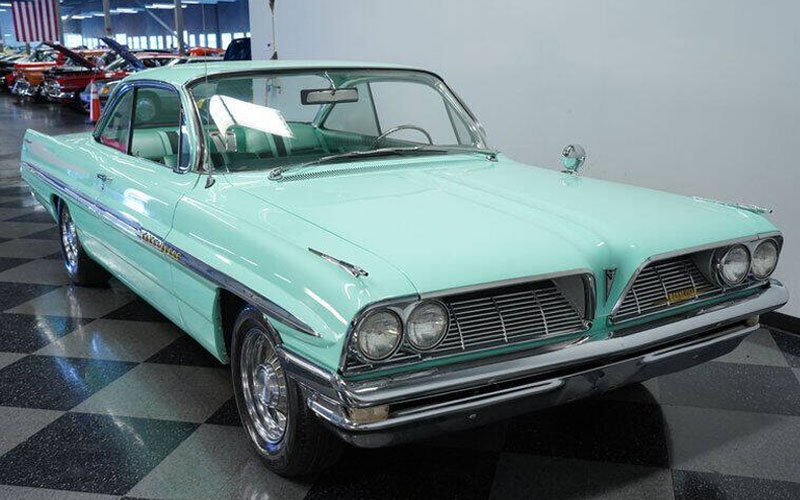
The third full generation of the Pontiac Bonneville debuted for the 1961 model year with updated styling, including the return of the split grille, a wraparound windshield, and an aggressive forward leaning front end design. A new pillarless four-door hardtop expanded the Bonneville’s list of available body styles. Appointments like “Morrokide” vinyl upholstery, walnut trim, and carpeted door cards helped the Bonneville retain its semi-luxury reputation.
The triple carbureted 389 V8 continued as the Bonneville’s most powerful engine offering 348 horsepower. Mid-1961, Pontiac added a larger 421 cu.-in. V8 to the Bonneville’s engine lineup. In “Tri-Power” form it produced up to 375 horsepower.
1962 was a banner year for Pontiac. The company sold upwards of 100,000 Bonnevilles, helping Pontiac rise to third place in overall sales among US marques. The new Pontiac Grand Prix was also introduced that year. Essentially a short wheelbase version of the Catalina, it shared many of the same features as the high-end Bonneville coupe.
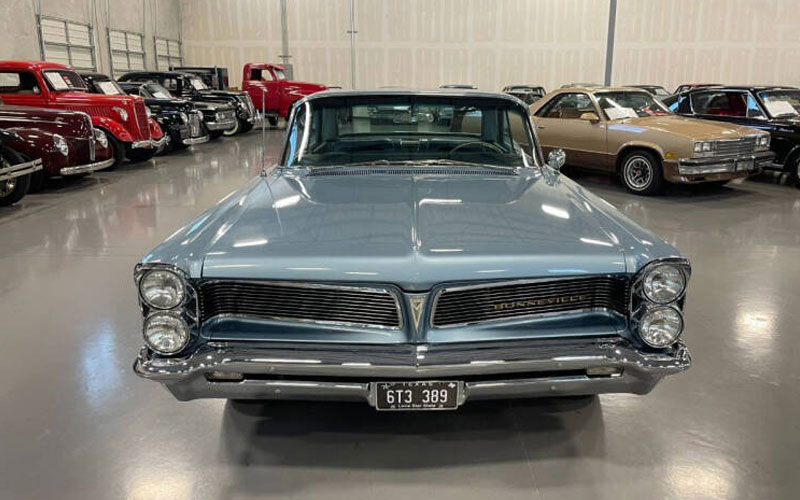
A redesign for the 1963 model Bonneville introduced stacked headlights among other revisions. For one year only, the 421 V8 was offered in “Super Duty” form with two four-barrel carburetors good for 425 horsepower. The option was priced at an eye-watering $2,250, an additional two-thirds on top of the base Bonneville.
The Pontiac Bonneville saw another seven generations, some like the fourth gen, were great, while others, like say the eighth generation, were less inspiring. By the time the tenth and final generation rolled out in the year 2000, the humdrum Bonneville was a far cry from its dazzling peak in the early 1960s.


